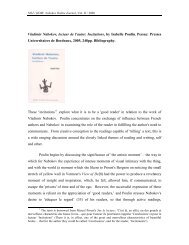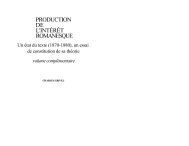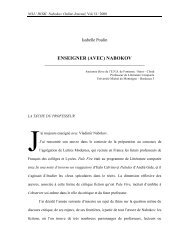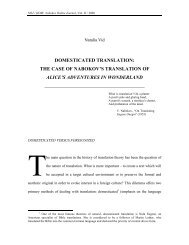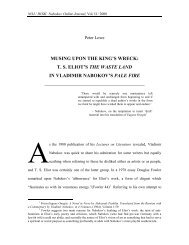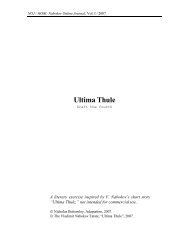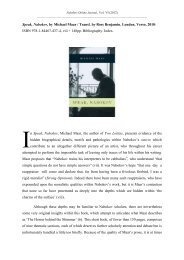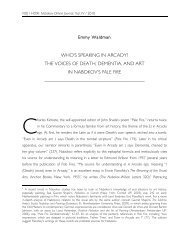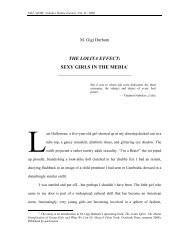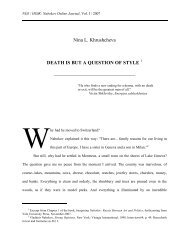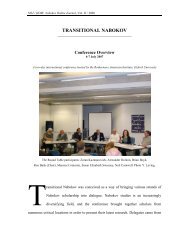You also want an ePaper? Increase the reach of your titles
YUMPU automatically turns print PDFs into web optimized ePapers that Google loves.
Nabokov Online Journal, Vol. V (2011)<br />
_______________________________________________________________________<br />
Yet even when attacking purely rhetorical devices, parody undermines the<br />
ideologies and philosophies relying thereupon. And so, for Morson, and Bakhtin, on<br />
whose concept of double-voicedness Morson’s theory of parody rests, parody’s focus on<br />
context and its orientation toward an audience render it not so much a meta-literary,<br />
formal matter as a manner of acting and being in the world, of bringing art into the world<br />
external to it. In A Theory of Parody: The Teachings of Twentieth-Century Art Forms,<br />
Linda Hutcheon builds on this conception, suggesting that postmodern parody is always<br />
ideological: “[T]he parodic appropriation of the past reaches out beyond textual<br />
introversion and aesthetic narcissism to address ‘the text’s situation in the world’” (116).<br />
In the postmodern period, then, parody takes on functions previously fulfilled by satire.<br />
Implicating an original work in ideological contexts excluded by the work’s author,<br />
parody exposes ideological ramifications and ousts the author as arbiter of meaning.<br />
Postmodern parody attacks modernist “elitism” by breaking down the border between<br />
high and low culture and “restoring to literature [a pre-modernist] ‘awareness of [its]<br />
sexual-, racial-, and class-content’” (Hutcheon 81). With respect to sexual content, Pera’s<br />
text attempts to accomplish precisely that.<br />
Pera is troubled by Humbert’s (or is it Nabokov’s?) belief in his power to destroy<br />
and then aesthetically reassemble reality; his seeming presumption that reality will not<br />
resist these machinations. The power relationship thus envisioned between the author and<br />
his subject takes on extra significance when viewed in terms of gender dynamics: the<br />
source-text’s author after all, marked by the text as male, wields enormous power to<br />
aesthetically create, redeem, or immortalize his female-marked object. To negate this<br />
authorial control, Pera’s text renders the moral-aesthetic apotheosis at the end of the<br />
original story impossible in several poignant ways:<br />
1) Pera’s most significant blow against Humbert’s project of resurrection through<br />
creative memory is not so much her Lo’s vapidity and deplorable accessibility, but the<br />
very fact of her physical survival. Unlike Nabokov’s, Pera’s Lolita does not die in<br />
childbirth. Moreover, Lo’s own story is not published posthumously, and so can in no<br />
way be regarded as some attempt to live on in art. Pera seems to suggest that Nabokov’s<br />
novel needed to kill off the heroine first so that it can later accomplish her aesthetic<br />
13



